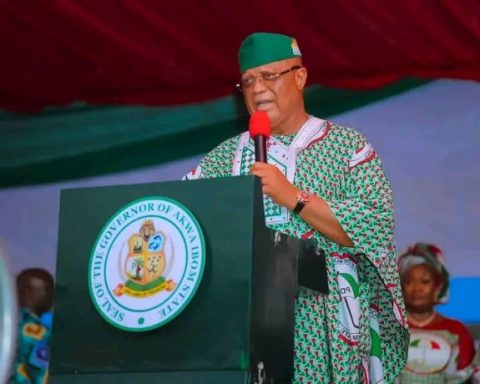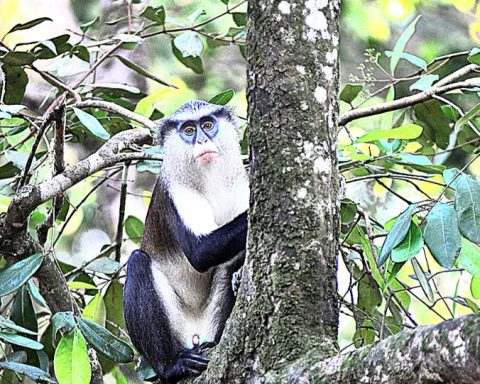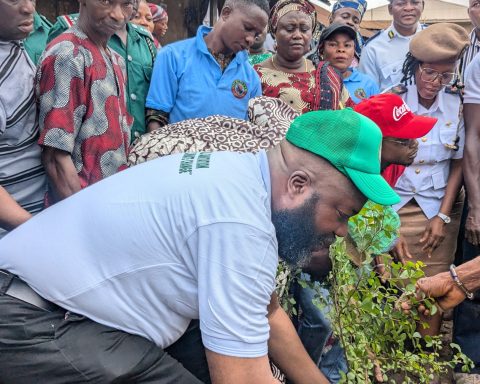
“Nigeria’s rich and diverse culture presents many opportunities to develop tourism products that leverages off our culture,” says toutism icon, Otunba Wanle Akinboboye. “These products would grow our economy and provide a regular inflow of tourist income.”
While focusing on the culture of the Yorubas, he noted that they could be found in the South West of Nigeria and also inhabits parts of Benin and Togo. The combination of these areas is often collectively referred to as Yorubaland.
He also noted that compliments of the trans – Atlantic slave trade, there are persons of Yoruba descent in places as diverse as Brazil, Cuba and Haiti that have maintained strong links to Yoruba culture, despite the fact that they had little or no direct contact with Yorubaland for centuries.
According to Yoruba mythology, Ile-Ife (“Place of Dispersion”) is the origin point of humanity and creation. It is the place where the Yoruba gods descended to the earth and civilization started .
The Yoruba’s myth of creation states that, in the beginning, the world consisted of the sky above with water and marshland below.
Olorun the chief god ruled the sky and the goddess Olokun ruled what was below. Obatala, another god, then obtained permission from Olorun to create dry land for living creatures to inhabit.
He was advised by Orunmila, the god of prophecy and Olorun’s oldest son to do this using a long gold chain that could reach the water’s surface, a snail’s shell filled with sand, a white hen, a black cat, and a palm nut, all of which he was to carry in a bag.
All the gods contributed what gold they had, and Orunmila supplied the articles for the bag. While Obatala was climbing down he found the chain was not long enough so based on instructions given by Orunmila he poured the sand from the snail’s shell, and released the white hen.
When the hen landed on the sand it began scratching and scattering it about.Wherever the sand landed it formed dry land, the bigger piles becoming hills and the smaller piles valleys. Obatala jumped to a hill and named the place ‘Ife’ while the dry land extended as far as he could see.
Obatola dug a hole, planted the palm nut, and saw it grow to maturity in a flash. The mature palm tree dropped more palm nuts on the ground, each of which grew immediately to maturity and repeated the process.
Obatala settled down with the cat for company. After many months and being bored with his own company he decided to create beings like himself to keep him company.
He dug into the sand and soon found clay with which to mould figures like himself . However, after some time, he started to drink palm wine from a nearby palm tree and became drunk . He then returned to his task of making new beings but being drunk fashioned many imperfect figures
Without realizing this, he called out to Olorun to breathe life into his creatures. However, when he sobered up , he took a vow of abstinence and undertook to take care of the deformed, becoming the Protector of the Deformed.
The people Obatala created built huts in Ife which prospered and became a city.
Unfortunately Olokun was displeased because Obatala failed to consult with her before creating land and had usurped so much of her kingdom. So when Obatala went to the sky for a visit, Olokun summoned the great waves of her vast oceans and sent them surging across the land drowning many.
Those people that had fled to the highest land beseeched the god Eshu who was on visit to earth to return to the sky and report what was happening to them.
When Orunmila heard the news he climbed down the golden chain to the earth, and cast many spells which caused the flood waters to retreat and the dry African land reappear. So ended the great flood.
This belief imbues Ife with immense religious and cultural significance, making it a pilgrimage site for Yoruba people worldwide.
It is also of note that Ife is famous for the bronze and terracotta art that was created between the 11th and 15th century which art turned the concept of African art on its head due to its realism and the quality of the artwork.
Otunba Akinboboye then spoke about the Olojo Festival which is an ancient festival celebrated each year in Ife.
He noted that the festival has been described by the current Ooni (king) as a festival that celebrates the Black race all over the world.
The Yoruba word ‘Olojo’ means ‘The Day Of The First Dawn’ and speaks to the grateful heart of man towards God’s creation and the existence of Humans.
It celebrates Ogun who is the Yoruba god of Iron, and is believed to be the first son of Oduduwa the progenitor of the Yoruba. The festival is held annually in October and is one of the biggest festivals on the cultural calendar of lle- Ife .
This vibrant festival is a celebration of the creation of the world and the coronation of the first Ooni of Ife, making it one of the most significant events in Yoruba history. The Olojo Festival is a mesmerizing display of colors, music, dance, and rituals that captivate both locals and visitors alike.
Olojo is only celebrated in Ile – Ife based on the belief that Ile-Ife is the source of mankind and where the creation of the universe took place. Hence the Festival’s tagline: “One Yoruba, One Source, One Festival”.
A central figure during the Olojo festival celebration is the Ooni, who plays critical roles as the spiritual head and custodian of the Yoruba tradition. It is one period of the year when the Ooni observes a special seven-day private moment of prayers and denial, communing with the ancestors on behalf of the people for peace and prosperity of the city in particular and Yoruba race in general.
Otunba Akinboboye feels that appropriately packaged and marketed the Oloja Festival would provide a rallying point for Yoruba people, particularly those in the Americas and the Caribbean , as it would provide an event tourists who are interested in exploring their heritage and cultural identity amongst the Yoruba could attend.
By making Ile – Ife and the festival a focal point for cultural tourism Nigeria would be taking advantage of its advantages.
It would also be able to redress the narrow view of Africa’s pre – colonialism history given that there is now documented evidence that the ancient Yoruba city states had a well organized governance system .
Otunba Akinboboye noted that the tourism focus of this product would be similar to that used by Egypt which has successfully used its ancient history and the presence of the pyramids and other ancient artifacts to create a viable tourism industry. In this regard, in 2023, 14.7 million people visited the pyramids of Giza while Egypt’s tourism income for that year amounted to US $1.48 trillion.
“It is my hope that you enjoyed hearing about the myth of creation from a Yoruba perspective. I am sure that other tribes in Nigeria equally have colourful myths which can be weaved into tourism and other products (books plays cartoons and so on) that Nigeria can sell to the world,” Otunba Olawanle Akinboboye added.






















